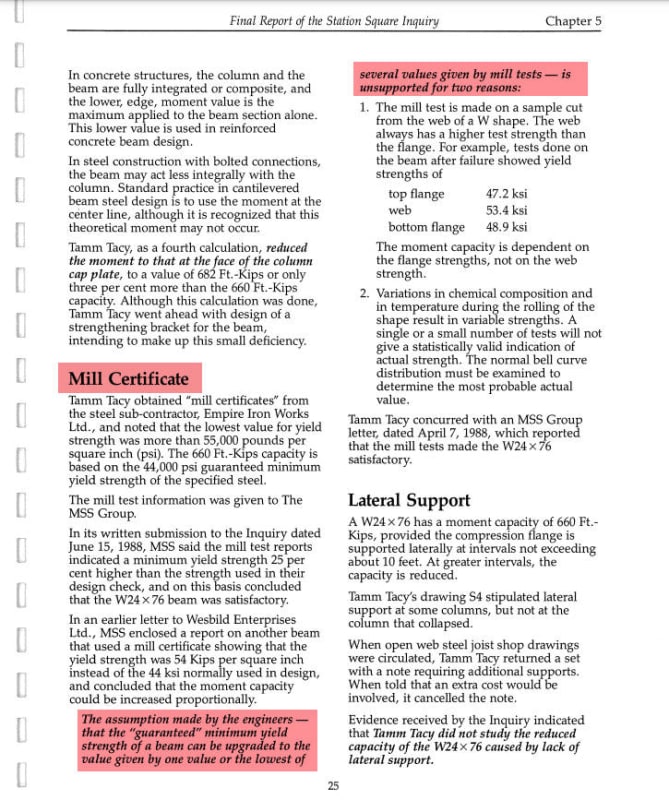Samwise Gamgee
Structural
On a project, due to some miscommunication, one of the areas was designed for lower occupancy. The project is all constructed and about to be occupied. When I ran numbers for the higher occupancy, a total of 4 beams and 3 connections are overstressed.
Beams : 2 have a strength DCR of8-10%, 2 have deflection DCR of L/190 instead of L/240).
Connections : 2 are overstressed by 3% and 1 is overstressed by 9%.
For the beams which are overstressed for strength, I got the mill report for the exact member and they have a higher Fy which brings down the DCR to 1.0
For the beams which are deflection more, as its a serviceability issue are there any additional concerns I need to consider ?
For connections, I asked a mill report for the shear plates which are overstressed due to shear rupture. The contractor said, they can only provide representative samples of the shear plates which were used. I used the one with lowest strength which was still higher than Fu of 58 and can keep the DCR 1.0
My question is for the beams as we have exact mill reports, can we justify the design to be well within safe limits using higher Fy. For connections, it is reasonable to consider the lowest strengths of Fu from the representative samples and be sure its safe ?
Also, the building has been constructed for more than a year and was occupied by construction personnel and their equipment. Haven't heard any complaints about behavior or discomfort.
Beams : 2 have a strength DCR of8-10%, 2 have deflection DCR of L/190 instead of L/240).
Connections : 2 are overstressed by 3% and 1 is overstressed by 9%.
For the beams which are overstressed for strength, I got the mill report for the exact member and they have a higher Fy which brings down the DCR to 1.0
For the beams which are deflection more, as its a serviceability issue are there any additional concerns I need to consider ?
For connections, I asked a mill report for the shear plates which are overstressed due to shear rupture. The contractor said, they can only provide representative samples of the shear plates which were used. I used the one with lowest strength which was still higher than Fu of 58 and can keep the DCR 1.0
My question is for the beams as we have exact mill reports, can we justify the design to be well within safe limits using higher Fy. For connections, it is reasonable to consider the lowest strengths of Fu from the representative samples and be sure its safe ?
Also, the building has been constructed for more than a year and was occupied by construction personnel and their equipment. Haven't heard any complaints about behavior or discomfort.

